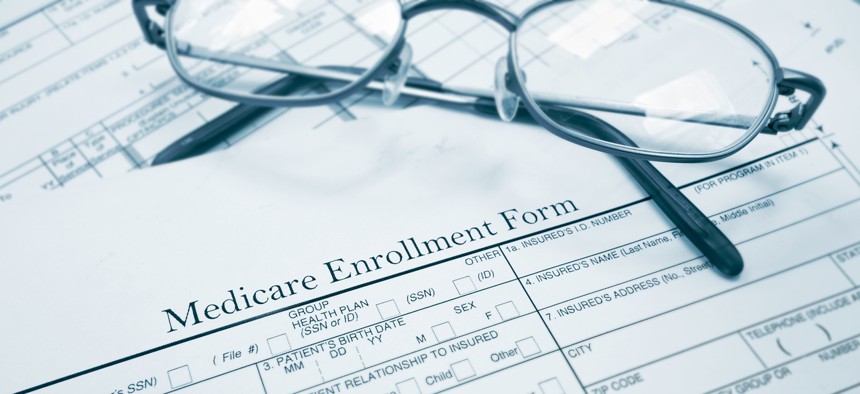
Shutterstock
Medicare and Open Season
Here’s some information to help you make some very important decisions.
Once again, the annual open season for the Federal Employee Health Benefits Program is nearly upon us. This year it runs from Nov. 9 to Dec. 14. If you’re retired or retiring soon and are eligible or soon to become eligible for Medicare (generally at age 65), this column should help you with some of the biggest decisions you will be making this open season.
Let’s look at some of the basics of Medicare, and how it interacts with FEHBP.
Four Parts
Medicare Part A helps pay for inpatient care in a hospital or limited time at a skilled nursing facility following a hospital stay. Part A also pays for some home health care and hospice care. Part A is free for most federal retirees and spouses.
Medicare Part B is insurance that helps pay for services from doctors and other health care providers, outpatient care, home health care, durable medical equipment, and some preventive services. In 2020 the Part B premium is $144.60 per month for people with a yearly income of $87,000 or less or those filing a joint tax return with $174,000 in income or less. Rates are higher for people with higher incomes. The latest Medicare trustees’ report projects that basic Part B premiums will increase by about $8.70 a month, to $153.30 per month, in 2021. The official announcement about Medicare premiums for the following year usually comes in early November.
Medicare Part C, also known as Medicare Advantage, includes all benefits and services covered under Part A and Part B--prescription drugs and additional benefits such as vision, hearing, and dental--bundled together in one plan. Most federal retirees enroll in original Medicare (parts A and B) and use FEHBP or TRICARE for Life as secondary coverage. Others use FEHBP with just Medicare Part A.
Medicare Advantage plans can be less expensive than FEHBP plans. Some federal retirees choose to suspend their FEHBP coverage to use a Part C plan. If this sounds attractive to you, be aware that most Part C plans have restrictive networks and work only in the regional area where you live. They may also employ step therapy, which is when insurers insist that doctors use older, lower-cost drugs first to control costs before prescribing a more expensive newer medication.
A better, less restrictive option might be to use one of the newer FEHBP Medicare Advantage Plans that are available during open season. I’ll write about them in a future column.
Medicare Part D covers prescription drugs. FEHBP plans include creditable prescription drug coverage, so it generally isn’t necessary to pay extra for Medicare drug coverage. However, if you decide to get Medicare drug coverage, you can keep your FEHBP plan, and in most cases, the Medicare plan will pay first.
Enrolling in Medicare
Your initial enrollment period for Medicare starts three months before your 65th birthday month and lasts for seven months. For example, if you will turn 65 on Feb. 15, 2021, your initial enrollment period will start on Nov. 1, 2020 and end on May 31, 2021.
If you’re 65 or older and covered by health insurance as a current federal employee or are covered by the health insurance of your spouse who is a current employee, then you can delay Medicare Part B enrollment until the special enrollment period that follows your (or your spouse’s) retirement for eight months.
If you’re a military retiree or spouse and still employed and covered by TRICARE and FEHBP as an employee, then at 65 you can choose to delay enrollment in TRICARE for Life until you retire. TFL requires that you enroll in Medicare parts A and B. Once you retire, you can choose to suspend your FEHBP coverage and use TFL and Medicare parts A and B, which will provide excellent health coverage.
There is generally no reason not to enroll in Medicare Part A when you turn 65, even if you’re still working. Most people don’t pay a premium for Part A. If you have applied for Social Security retirement, you will automatically be enrolled in Medicare parts A and B--but you can waive Part B enrollment.
If you’re over 65 and retired and you didn’t enroll in Medicare Part B when you were first eligible, there is a general enrollment period every year from Jan. 1 to March 31. For every 12 months that you could have been enrolled in Part B but weren’t, you’ll incur a 10% late enrollment fee on your premium.
If you want to suspend your FEHBP coverage to use a Medicare Part C plan, then you might be interested in the current open enrollment for Medicare that runs from Oct. 15 to Dec. 7. It offers several options for changing or joining Medicare plans.
Next week, we’ll review the incentives offered by some FEHBP plans to encourage you to enroll in Medicare parts A and B, along with some FEHBP plans that cater to retirees with Medicare coverage.







